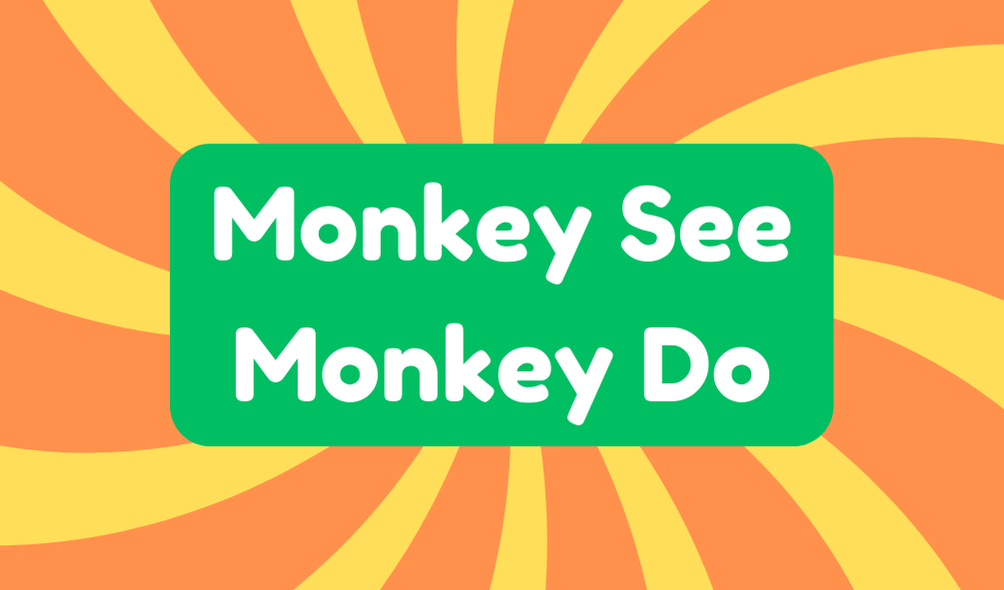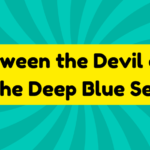The phrase "monkey see, monkey do" refers to the tendency of individuals to mimic the actions of others without critical thinking. This behavior, often seen in children and social settings, highlights a reliance on imitation rather than original thought. While imitation can foster learning, it may also lead to stifled creativity and blind followership. For instance, teenagers might follow peer behaviors mindlessly, and employees may replicate procedures without understanding their intent. Understanding this phenomenon encourages environments that prioritize independent thought and critical analysis. By exploring deeper implications, one can gain valuable insights into fostering creativity and enhancing learning outcomes.
Synonyms
The phenomenon of "monkey see, monkey do" can be encapsulated by various synonyms that reflect the essence of imitation without comprehension. This speech pattern signifies more than mere imitation; it embodies a concerning trend where critical thinking is compromised. Consider the following terms:
- Copycat Behavior
- Mimicry Syndrome
- Imitative Action
- Blind Followership
Engaging in mimicry behavior not only stifles individual creativity but also highlights a reluctance to analyze situations critically. Individuals who default to such patterns may inadvertently neglect their capacity to innovate. The trend of blindly adopting others' actions without thorough consideration underscores the need for an educational framework that fosters independent thought, rather than simply emulating prevailing norms. Insightful evaluation is essential to break this cycle.
Example of Sentences
Illustrative examples of the "monkey see, monkey do" phenomenon abound in various contexts, showcasing how individuals often replicate the actions of others without critical thought. Such imitation behavior can stifle creativity and encourage conformity rather than innovation. Here are some pertinent instances:
- Children imitated their teacher's dance moves, lacking their own interpretation.
- Political followers often adopt leaders' views without engaging in critical thinking.
- Interns may replicate procedures blindly, neglecting to understand their purpose.
- Teenagers frequently succumb to peer pressure, mirroring behaviors they do not agree with.
These examples highlight the importance of fostering environments that promote critical thinking. Encouraging individuals to question what they see is essential for innovation and personal growth, breaking the cycle of passive imitation.
Origin
Tracing the origins of the phrase "monkey see, monkey do" reveals intriguing insights into its historical context and cultural significance. Theories suggest its roots in 18th-century Chinese Pidgin English, originally utilized in trade contexts, while Jamaican origins have also been proposed, albeit without substantiated evidence. An early instance appears in West African folklore, where monkeys mimic a hat seller's actions, illustrating the universal theme of imitation. The phrase's documented usage emerged in print as early as 1893, with differing historical interpretations emphasizing its relevance across various cultures. This historical usage underscores the ongoing struggle between innovation and imitation, raising critical questions about the impact of mimicry on human behavior, creativity, and social dynamics in contemporary society.
Collocations
Collocations related to "monkey see, monkey do" reveal the phrase's versatile applications across various contexts. Understanding these connections is vital for academic implications and behavioral analysis. The following collocations exemplify how this concept manifests in everyday behavior:
- Imitative behavior: Highlighting the tendency of individuals to mimic actions.
- Social learning: Emphasizing how people adopt behaviors observed in others.
- Peer influence: Addressing the impact of surroundings on decision-making.
- Copycat phenomenon: Illustrating spontaneous imitation in various settings.
Such collocations shed light on the broader implications of mimicry. While imitation can serve as a learning tool, it often leads to uncritical acceptance of behaviors, stifling creativity and independent thought. As a result, challenging the "monkey see, monkey do" mentality is essential for fostering innovation and progress.
How to Use in Everyday Language
Recognizing the various collocations related to "monkey see, monkey do" highlights the phrase's relevance in everyday language. It serves as a caution against mindless imitation, commonly illustrated by children imitating dance moves or employees uncritically replicating procedures. In contexts where "monkey business" occurs, one might notice a troubling lack of critical thinking among individuals who follow trends without questioning their validity. This mentality not only stifles creativity but also fosters an environment where innovation is rare. By being mindful of our tendency to emulate, we can encourage thoughtful decision-making, prioritizing originality over mere imitation. Ultimately, adopting a critical approach to our actions helps us avoid the pitfalls of mindless mimicry and enhances personal and professional growth.
Why Is It Still Relevant Today?
How do we continue to see the "monkey see, monkey do" mentality manifest in modern society? Today, cultural mimicry thrives in various settings, from social media to corporate environments. Individuals often follow trends without critical analysis, reflecting a troubling reliance on behavioral patterns that discourage innovation. This phenomenon is particularly evident in businesses that imitate competitors rather than fostering original ideas, resulting in a stagnation of creativity. The educational landscape also suffers; students frequently adopt peer behaviors instead of engaging deeply with material. To combat this, a shift toward encouraging independent thought and questioning is essential. Emphasizing critical thinking over imitation will cultivate a society that values originality, ultimately driving progress and meaningful change.







